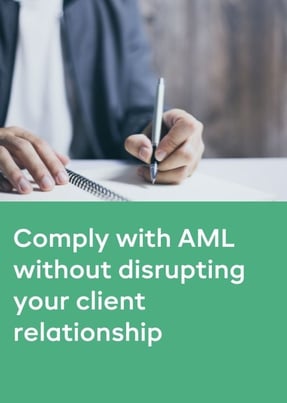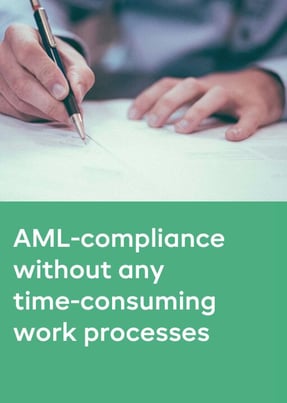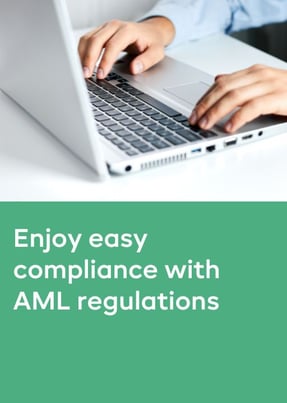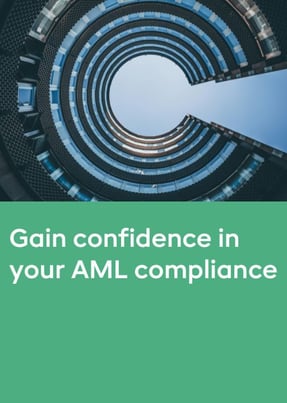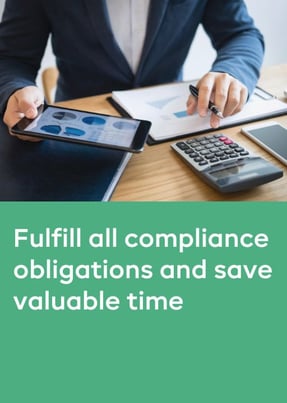- Products
- RegLab for ...
- Knowledge centre
Download the AML glossary >
 Discover the essential AML compliance terminology and gain instant access to a comprehensive guide
Discover the essential AML compliance terminology and gain instant access to a comprehensive guide - The company
Working at RegLab >
Join RegLab as the new Product Owner of our software tool and change the way the legal community approaches anti-money laundering.
There may not be any vacancies that perfectly match your profile, but that does not mean there is no room for someone who can improve RegLab.
- Book a demo
AML screening: which risk lists shouldn't you forget?
Anyone who provides services to clients must screen them for risks. This applies not only to AML services, but to all your clients. Sanctions legislation requires you to check whether someone is on a sanctions list or a list of high-risk countries. But which lists are these exactly? And what do you do if a client is on one of them? In this article, we explain it step by step.
Why is the ID number so important?
AML screening starts with the basics: the name, country of residence, and ID number. That number is important. It is unique and reduces the chance of encountering dozens of namesakes. Make sure that the person on the document matches your client and carefully note down the number. This will allow you to search through the risk lists more efficiently and reliably.
Please note: you may only store a copy of the ID document if it is part of an AML matter.
Want to know more about what to request during client identification? Read our article: What documents do I request during an AML screening?
Don't forget these risk lists
If a country, company or person is subject to sanctions, they will be added to a sanctions list. There are various sanctions lists, and these are constantly evolving. This is because sanctions are continuously being imposed, and the lists are subsequently updated accordingly. Below is an overview of the lists you should not forget during any AML screening:
- EU sanctions list;
- UN sanctions (persons);
- EC list countries with AML/CFT strategic deficiencies;
- FATF list ‘high risk and non-cooperative jurisdictions’;
- EU list ‘non cooperative tax jurisdictions’;
- OFAC list.
List of high-risk countries: what if your client is on it?
The European Commission publishes a list of countries that are failing to combat money laundering and terrorist financing.
Is your client on such a list? Then there is no need to panic. You are allowed to work for a client based in a high-risk country, as long as it falls within your risk appetite. Always investigate the following first:
- The source of the UBO's funds
- The source of the funds contributed to the transaction.
- Whether it is logical for your client, representative or UBO to reside in a high-risk country.
Document your findings and record your assessment. This is the only way to demonstrate that you have acted with due care.
A person is sanctioned, now what?
Suppose you have a lot to do with Russia on behalf of clients. One of the UBOs is on a sanctions list.
It is now crucial to examine closely what services you will be performing for the client. If you are going to work directly for this UBO, there is a 99.9% chance that this is not permitted. Before drawing any conclusions, it is wise to study the regulation on the basis of which the person has been sanctioned. You are responsible for conducting this research yourself.
Sometimes there is a grey area, in short, a doubt. The legislation is simply not clear. Please note: ultimately, you are the one who has to make the assessment and record it. You can only do this on the basis of thorough research and common sense (and a little gut feeling).
AML software offers solutions
Manually going through the risk lists is an impossible task. The Dutch sanctions list is manageable, but the European and other international lists are much more extensive and constantly changing. In addition, you are obliged to monitor your clients continuously.
Proper AML software can assist you with this. The software automatically screens your clients against all relevant lists. You can also generate reports at any time and easily check your entire portfolio. Sanctions monitoring runs continuously in the background.
If a client is placed on a risk list, you will receive an immediate notification and can immediately conduct a follow-up investigation. If someone is removed from a list, you can easily downgrade their risk profile from high to medium.
Themed file: fully prepared for the supervisor’s audit
This article is part of a number of articles and downloads that will help you prepare yourself for the supervisor’s visit. Do you want to be 100% AML-proof and ready for the supervisor’s visit? Find all FAQs in our Knowledge Centre.
Knowledge centre
Download the assessment: "Risk assessment: a tool."
Easily assess your client's risk level with the help of this document.
